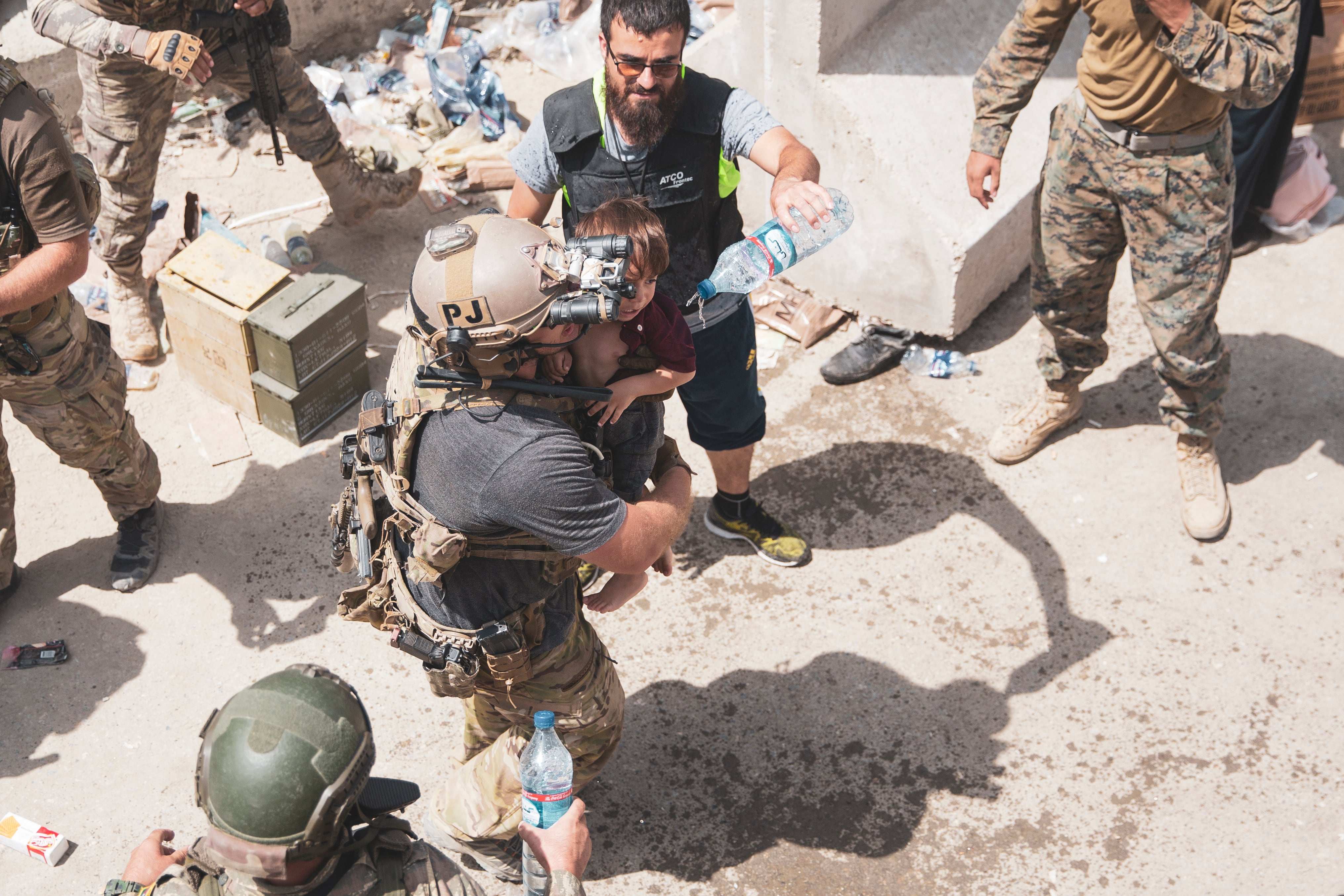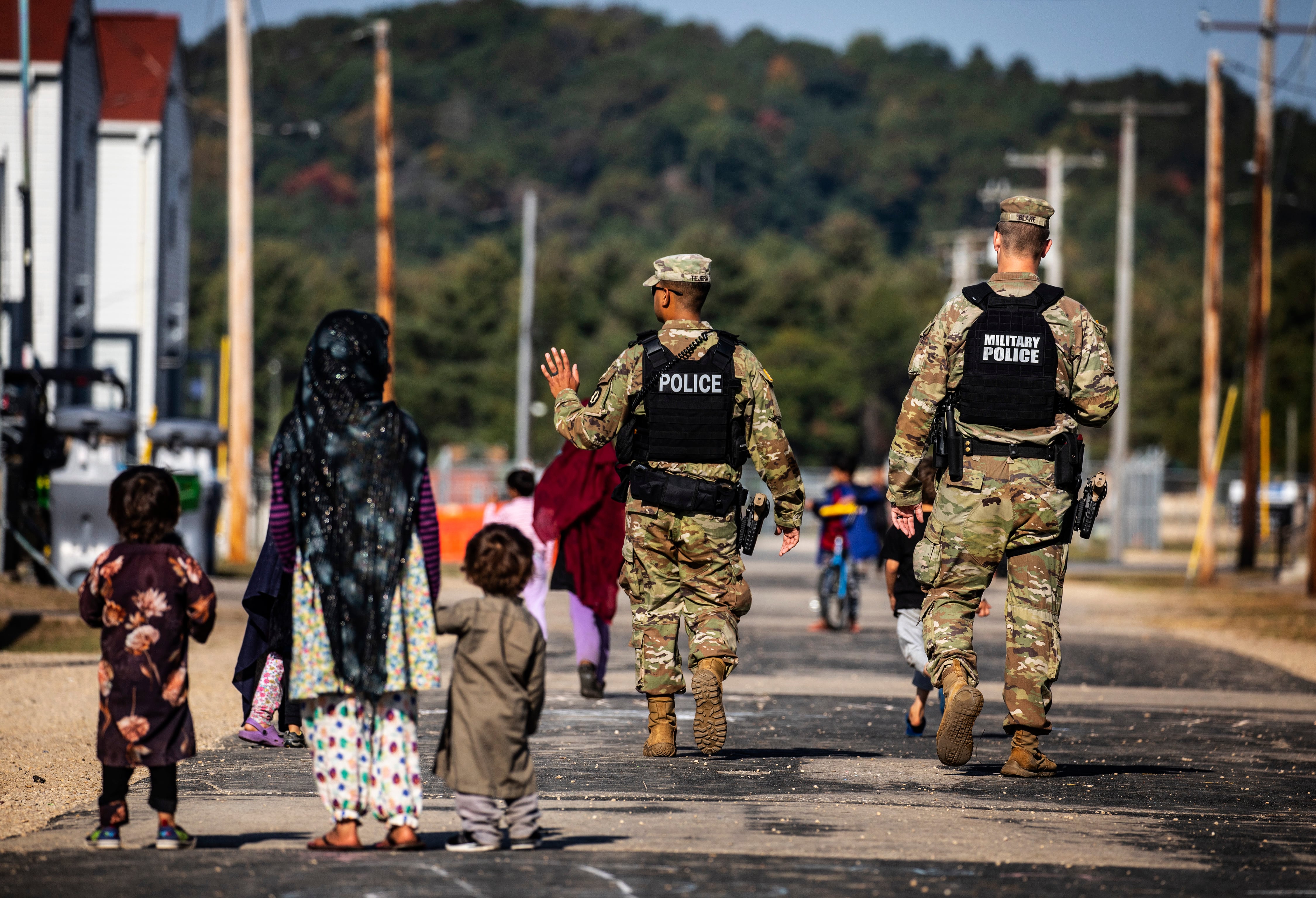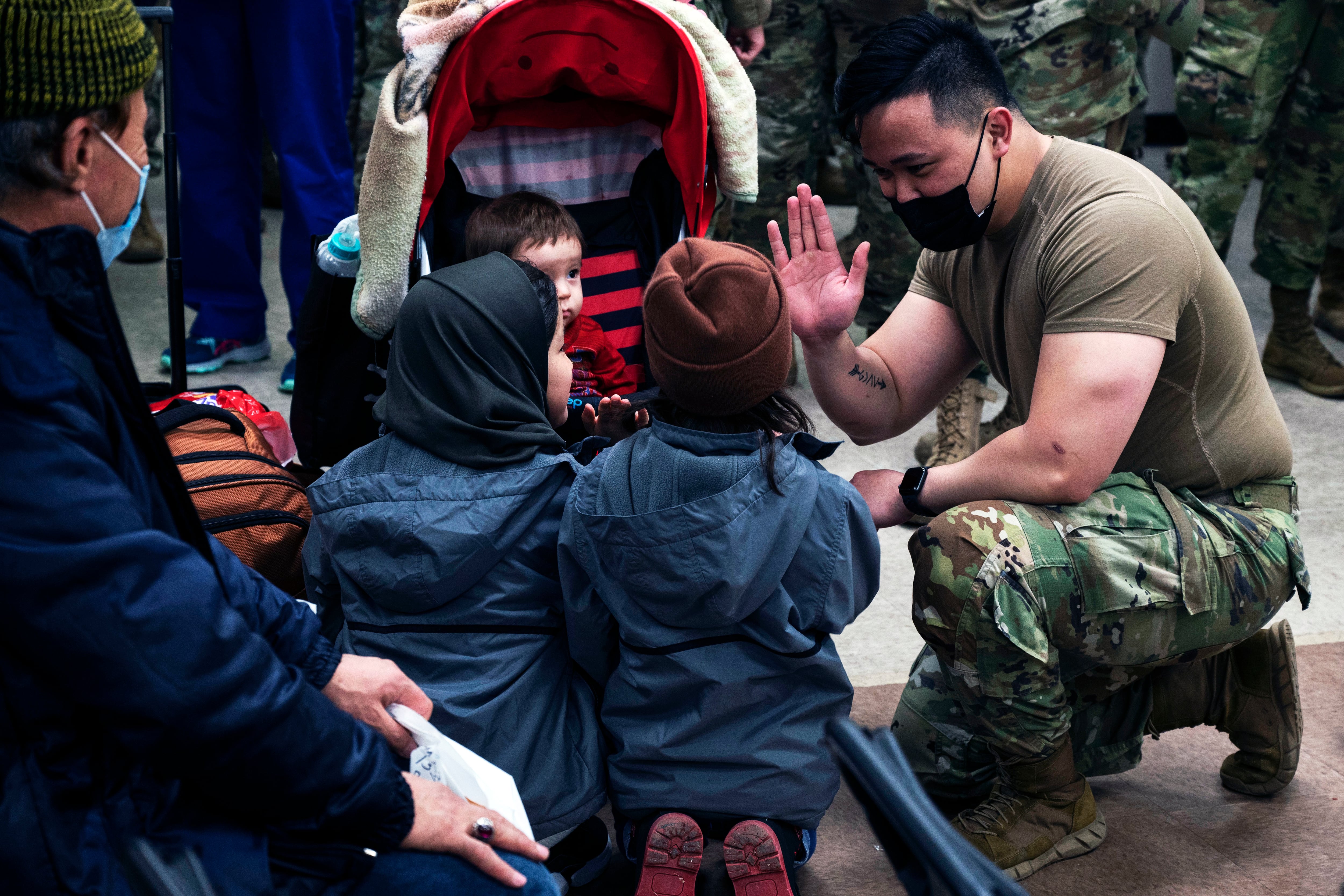As Kabul fell to the Taliban in summer 2021, 10 American military installations managed to temporarily house tens of thousands of Afghan refugees as part of a herculean effort to screen, care for and resettle as many people as could get through Hamid Karzai International Airport’s gates in the final days of the U.S. war in Afghanistan.
The overall endeavor was a success, according to a Defense Department Inspector General report released Tuesday, but there were a handful of issues that came up during the after-action reviews of Operations Allies Refuge and Allies Welcome.
Some were simply a consequence of the quickly thrown together effort, which didn’t get started until early August 2021, months after the Biden administration announced the withdrawal from Afghanistan. Others were administrative oversights that posed larger risks to the operation.
Operation Allies Refuge kicked off in late July 2021, with an announcement that 2,500 Special Immigrant Visa-holders would travel from Kabul to Fort Lee, Virginia, where they would stay temporarily.
Organizers there had about two weeks to get set up, anticipating more Afghans would continue to arrive, even past the U.S. military’s Sept. 1, 2021, withdrawal deadline.
But then the Taliban took Kabul on Aug. 15, 2021, completely upending plans and starting a race to evacuate as many Afghans as possible in the following two weeks.
DoD identified nine more bases, including some in Europe, that would be responsible for housing evacuees on their way to resettlement. They had between two and eight days to prepare, the IG report found.

The report calls out the State Department, which had been in charge of evacuation plans and timelines, for deeply underestimating the number of refugees they would be sending to American bases.
“For example, on August 18, 2021, Ramstein Air Base leadership was informed they had to prepare to receive 2,500 evacuees,” according to the report. “Less than 2 weeks later, 28,517 evacuees had arrived at Ramstein Air Base.”
All told, more than 100,000 Afghans passed through American military installations, the last of whom were resettled in early 2022.
The DoD IG judged the operation successful, but identified several lessons learned.
One of the main issues was a lack of memorandums of understanding to guide the multiple government agencies involved.
Traditionally, in these situations, these agreements would lay out who was in charge of which aspects of the refugees’ care. As the Defense Department provided room, board and medical care, State issued their visas and Homeland Security handled background checks.
Technically DHS was the lead agency, but the Pentagon’s policy chief felt he should defer to the State Department, and so tried to draw up an MOU to that effect. But State refused to sign it.
“For example, during our site visits, we identified several areas where roles and responsibilities between the DoD, the DOS, and the DHS were unclear, including accountability of Afghan evacuees, law enforcement jurisdiction, and provision of services beyond basic sustainment,” according to the report. “MOAs at the installation level that assign roles and responsibilities to the DoD, the DOS, and the DHS would have assisted task force personnel and interagency partners understand their responsibilities.”
Three weeks becomes six months
The DoD-led task forces responsible for the care of Afghans were initially told it would take about 21 days to process their guests. But Operation Allies Welcome didn’t wrap up until February, and in the mean time, the refugees weren’t getting everything they needed, the IG found.
Safety was a concern, for a couple of reasons. One, some of the installations didn’t call up civil affairs advisers, including those at Fort Bliss, Texas, Forts Pickett and Lee, Virginia, For McCoy, Wisconsin, and Camp Atterbury, Indiana.
“Military civil affairs advisors possess the tools to identify, gauge, and address grievances from Afghan evacuees early and in a culturally appropriate way,” the report reads. “Providing the capability for task force personnel to address emerging issues early while being culturally sensitive was critical to maintaining a safe and secure environment for Afghan evacuees, interagency partners, and DoD personnel.”
They did have advisers at Quantico Marine Corps Base, Virginia, according to the report, which helped the task force commander establish “lines of communication with Afghan evacuees and potential second and third order effects of some of the command’s decisions, and coordinated with non‑Governmental organizations to host Afghan‑led English language and American culture classes,” the IG found.

By contrast, Fort Pickett, Virginia, didn’t have civil affairs personnel.
“TF Pickett security personnel expressed concern with several Afghan evacuees possessing homemade weapons. TF Pickett security personnel stated that there had been several instances of reported crimes, including knives stolen from the dining facility, and weapons made from pipes found in an Afghan evacuee’s possession,” the report found. “TF Pickett security personnel believed that Afghan evacuees made weapons for protection against other Afghan evacuees.”
It was technically up to the Virginia State Police to investigate and prosecute any crimes at Pickett, but personnel told IG investigators that local law enforcement had limited resources, so they only referred suspected felonies, leaving lesser crimes unaddressed.
At Atterbury and Joint Base McGuire-Dix-Lakehurst, New Jersey, “personnel did not always refer alleged criminal incidents, such as spousal and child abuse, assault, theft, and prostitution, to appropriate law enforcement,” the report found.
Instead, they “often diffused situations and counseled Afghan evacuees after alleged crimes were committed,” the report reads. “Dealing with these alleged criminal incidents internally resulted in no consequences for the alleged perpetrators and did little to deter future offenses or protect victims of these crimes.”
As weeks turned to months, it became clear that the resources amassed to care for the evacuees couldn’t cover all of the bases.
While the Afghans were able to get illnesses addressed and a battery of vaccines, many of them didn’t have access to dental care, or to mental health resources.
“Afghan evacuees living at each of the eight DoD installations had faced a long and uncertain journey out of Afghanistan, then met unfamiliar living conditions and uncertainty regarding eventual relocation,” according to the report. “Afghan evacuees explained that this concern, combined with the uncertainty regarding when or where they would resettle in the United States, ‘weighed heavily on their minds,’ contributing to mental stress.”
At the same time, seven of the eight U.S. installations didn’t have dentists on hand. And while the evacuees maybe could have gotten by without a teeth cleaning, oral infections can cause much bigger issues if they aren’t treated early.
Whether changes are made as a result of the report is up in the air. The IG concluded that the effort was overall a success, though there was room for improvement.
“We are not making any recommendations,” the report reads. “However, the lessons learned presented in this special report should assist the interagency partners, as well as the commands directly and indirectly responsible for the housing of non‑DoD civilians on installations throughout the world on behalf of another Federal department or agency.”
Meghann Myers is the Pentagon bureau chief at Military Times. She covers operations, policy, personnel, leadership and other issues affecting service members.





